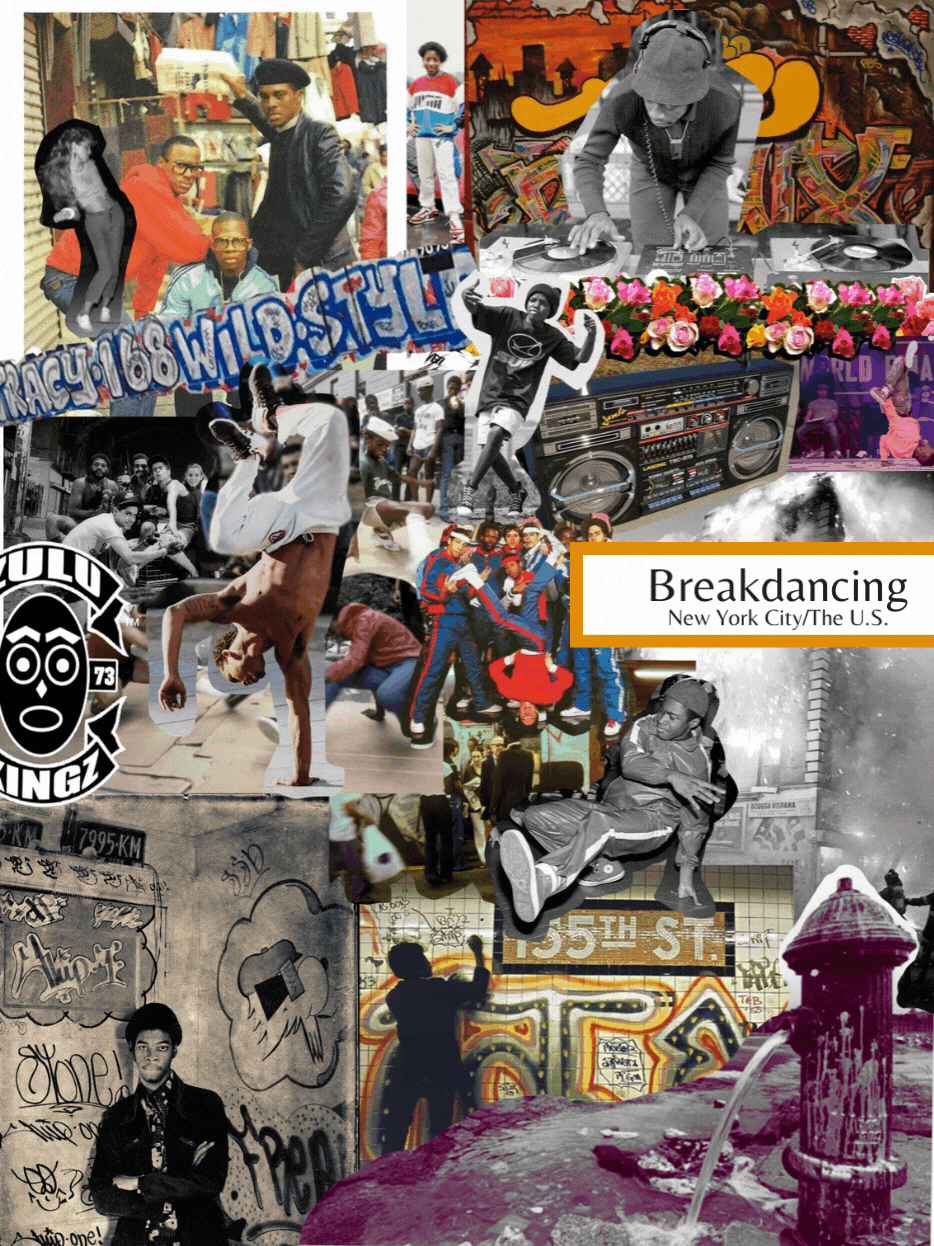About this Project
These collages are a visual reflection on some of the dances/movements studied throughout the Kinesthetic Anthropology course taught by Professor Deb Thomas. Inspired by Katherine Dunham’s work, where she traveled and studied dance and culture throughout Haiti and the Caribbean seeking to understand a sort of essentialized Blackness (or negritude) originated in Africa and retained by people of the African diaspora as we moved and were moved around the world. Zora Neale Hurston's Characteristics of Negro Expression also resonate with this work, and played a large role in the formation of this project. In a similar (yet much less thorough) fashion, this series of collages seeks to visually understand patterns in movements/dances and the cultures which surround them across the African diaspora.
Embodied Histories
As I began this project, I hoped to do some semblance of a genealogy for a few of the dances we studied in class. I wanted to try to understand their common roots, but even beginning to undertake such a task proved too great a task. A huge part of the trouble of this sort of endeavor is in part, due to the violence of colonization which purposely erases the histories of the colonized.
Beyond this fact, however, is the prevalence of embodied knowledge throughout the African diaspora which cannot accurately be depicted by Western forms of documentation. In an ideal world, such a project would be undertaken by traveling, talking to, and gathering images from the people who are a part of the histories and cultures which house these dances, as well as, where appropriate, participating in them in some form myself. As I was completing this project, language also complicated how movement was represented, as a given name might represent a singular move, a set of movements which compose a ritual, it may be naming a style of music, movements originated within a religion, location, culture, movie, festival, or some combination of these. These types of complexities might be more readily understood through a more place-based, cultural, bodily engagement with the origins of these movements and cultures.
With all of these complexities in mind, I chose to focus on the dances/movements we engaged with throughout this course and find a “relative,” so to speak, of some of them. This might be a dance which was derived from, influenced by, or an origin of those that we studied, or it may be a movement from the same physical location, movements from a related religion, or a different ritual practices by the same religion which were not discussed within this course. In putting these relatives directly next to one another, I hoped to try to visually understand the relationships between the two.
Fractals as Metaphor for African Diasporic Movement
We began this course by learning a bit about fractals: infinitely complex geometric patterns that are self-similar across different scales. The component parts of fractals are not precisely congruent in appearance, but they retain a resemblance to one another throughout the space they occupy; much in the same ways the movement represented by these collages do. Ron Eglash (1999) also emphasizes recursion as one of the “five essential components of fractals,” where “results are often repeatedly returned, so that the same operation can be carried out again.” I connect this to ideas about the transmission of dance through generational repetition, paralleling the creation of fractals to the creation of dance throughout the diaspora and furthering this metaphor.












